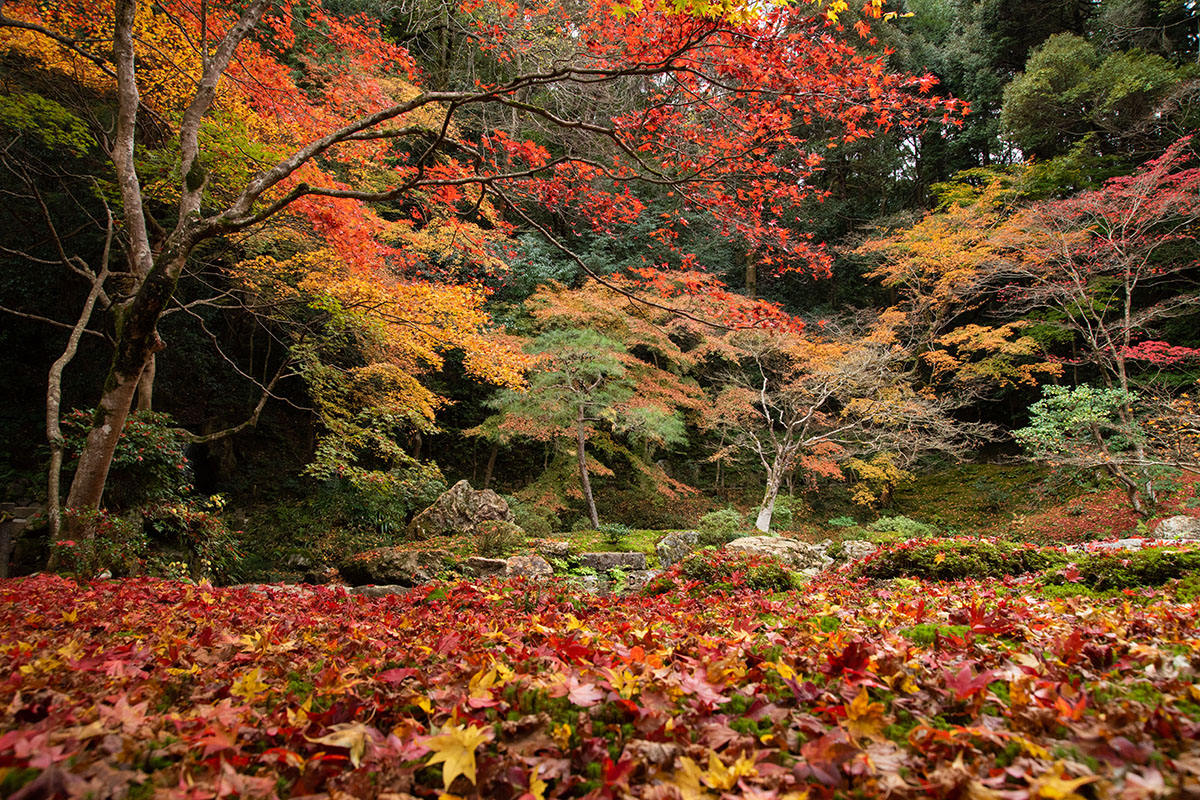Nanzen-in Temple
The garden at Nanzen-in Temple is a classic strolling pond garden of the late Kamakura period. It retains much of its original appearance and features an exceptional atmosphere of profound tranquility surrounded in deep forestry. It was designated a National Historic Site and Place of Scenic Beauty in 1923.
The garden's Sogen-chi Pond is said to be patterned after the shape of a dragon. On its left rear side, there is a waterfall stone arrangement and inside the pond there is a ""Horai island,"" named after a legendary island in Chinese and Japanese mythology, and also an island in the form of the Chinese character for ""heart"" (心).
According to the Great Record of Nanzen-ji Temple (Tenka Nanzenji-ki), a fifteenth century source that records Nanzen-ji Temple's origins and history, when this garden was created, plants were transplanted there from famous regions of present-day Nara, including cherry trees from Yoshino, maple trees from Tatsuta, and reed plants from Naniwa, present-day Osaka. Frogs were also brought from Ide, a town in present-day Kyoto Prefecture, to be released into the garden. Descriptions such as these give us a sense of the elegant atmosphere of the past.
- Location:
- Sakyo-ku, Kyoto
- Accessibility:
- open to the public
- Garden construction period:
- in Kamakura period












